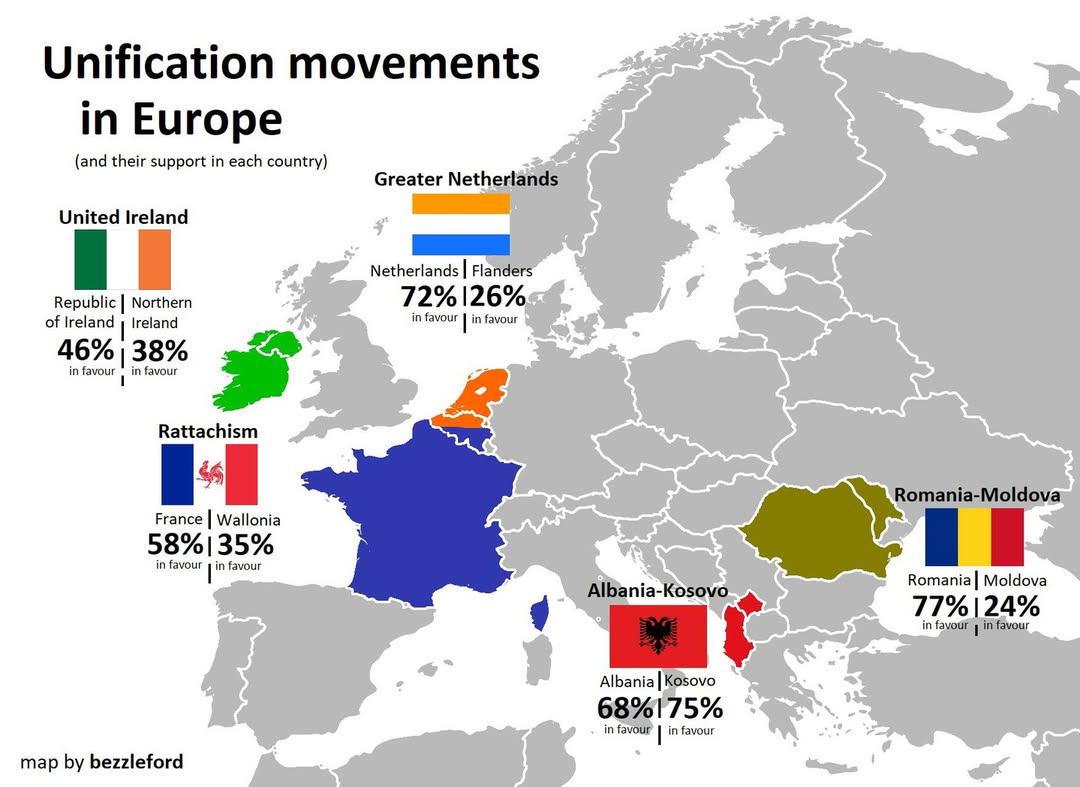European Unification Movements Map


Alex Cartwright
Senior Cartographer & GIS Specialist
Alex Cartwright is a renowned cartographer and geographic information systems specialist with over 15 years of experience in spatial analysis and data...
Geographic Analysis
What This Map Shows
The "European Unification Movements Map" provides a visual representation of the various movements advocating for the political and economic integration of European nations. It illustrates not only the geographic locations of these movements but also highlights their varying degrees of influence and historical significance across the continent. The map serves as a powerful tool for understanding how different regions have approached the idea of unification and cooperation, reflecting a rich tapestry of political aspirations and cultural identities.
Deep Dive into European Unification Movements
European unification movements have played a pivotal role in shaping the continent's political landscape throughout the 20th and 21st centuries. Initiated primarily in the aftermath of World War II, these movements aimed to prevent the devastating conflicts that had plagued Europe for centuries. The idea was simple yet profound: by fostering economic cooperation and political dialogue, countries could ensure lasting peace and stability.
One of the most notable early examples of unification efforts was the establishment of the European Coal and Steel Community (ECSC) in 1951, which aimed to integrate the coal and steel industries of six founding countries: Belgium, France, Germany, Italy, Luxembourg, and the Netherlands. This marked the first step towards what would eventually become the European Union (EU). By pooling resources and interests, the ECSC laid the groundwork for deeper economic and political integration.
Interestingly, the map delineates regions such as the Benelux countries (Belgium, Netherlands, and Luxembourg), which have historically been strong proponents of unification. These countries were among the initial signatories of various treaties leading to the EU's formation. However, not all areas have embraced unification equally. For instance, the British Isles, particularly during the Brexit referendum, showcased a significant divergence in opinion regarding European integration. The map highlights this contrast, illustrating how unification movements have sparked both support and resistance.
As we delve deeper, it’s essential to consider the role of cultural identity in these movements. The rise of nationalism in many regions, especially in Eastern Europe, has complicated the pursuit of unification. Countries with strong national identities, such as Hungary and Poland, often resist overarching EU policies that they perceive as infringing on their sovereignty. This tension is visually represented on the map, where the strength of unification movements varies significantly across different nations.
Regional Analysis
When we break down the map regionally, several trends emerge. In Western Europe, the unification movements are generally stronger, with countries like France and Germany leading the charge. These nations have historically been at the forefront of EU initiatives, pushing for policies that promote economic integration and political solidarity. The map shows a dense concentration of pro-EU sentiments in these areas, reflecting a shared commitment to collective progress.
In contrast, Southern European countries such as Greece and Italy exhibit a more complex relationship with unification. While they are EU members, economic challenges and political instability have led to skepticism about the benefits of integration. The map captures this variance, showing pockets of resistance even in nations that are part of the EU framework.
Eastern Europe presents an intriguing case, where countries like the Czech Republic and Slovakia have a mixed approach to unification. Although they joined the EU in 2004, there is a palpable sense of caution regarding deeper integration, as represented on the map. The historical context of Soviet influence plays a crucial role in shaping these attitudes, with many citizens wary of external governance.
Significance and Impact
Understanding European unification movements is crucial for grasping the current political climate in Europe. As the continent grapples with issues such as migration, economic disparity, and rising nationalism, the relevance of these movements becomes even more apparent. For instance, the ongoing debates about EU policies concerning immigration and fiscal responsibility highlight the delicate balance between national sovereignty and collective action.
Moreover, the future of these movements remains uncertain. With the rise of populism and nationalist sentiments across various nations, the trajectory of unification efforts could shift dramatically. Will countries continue to push towards deeper integration, or will we see a retreat into isolationism?
What’s fascinating is that public sentiment can change rapidly, influenced by global events, economic crises, or political leadership. As we look ahead, the dynamics illustrated on the map will be crucial in determining how Europe navigates its path forward. In essence, the map is not just a reflection of past movements but a living document that encapsulates the ongoing conversations about unity, identity, and the future of Europe.
Visualization Details
- Published
- August 18, 2025
- Views
- 100
Comments
Loading comments...